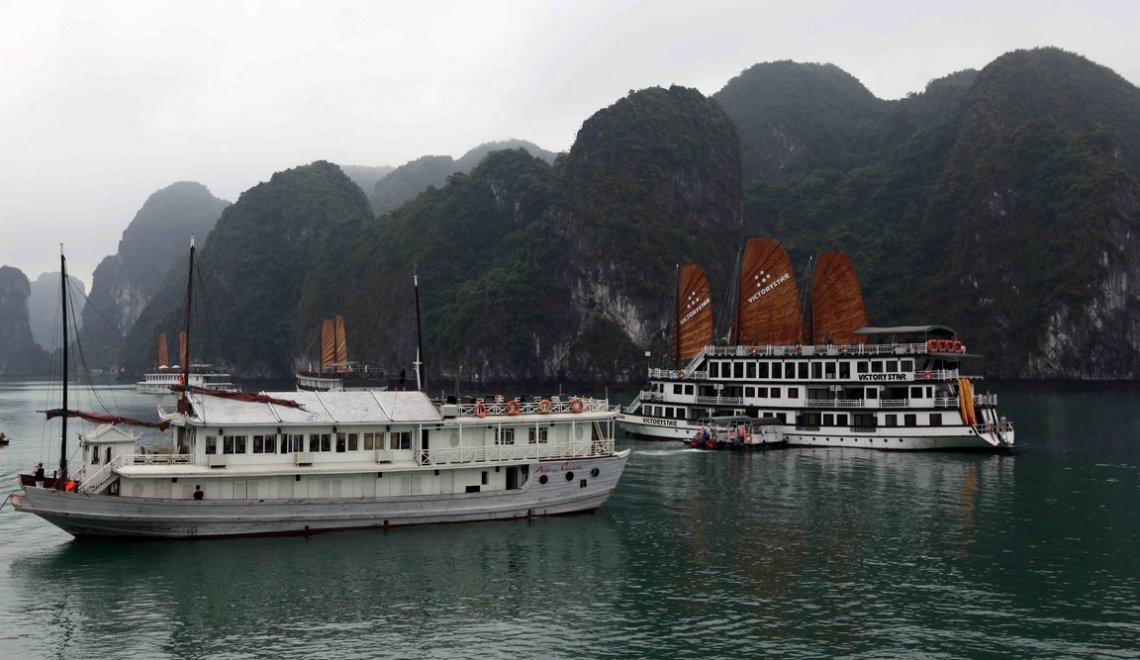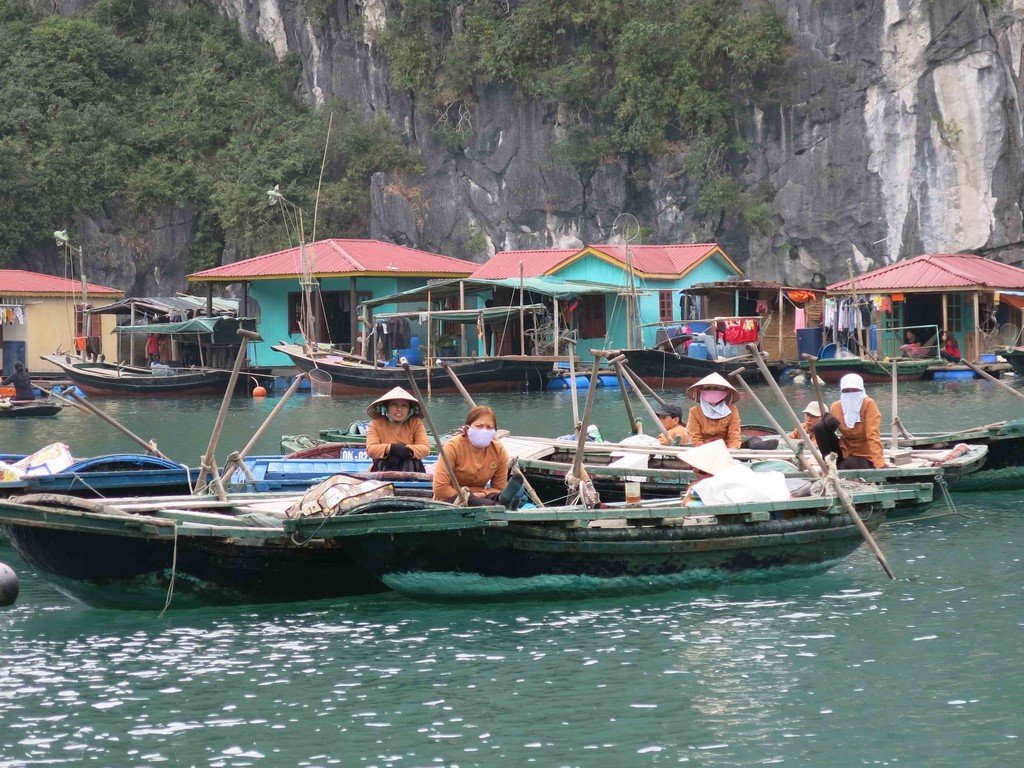
Listed as a UNESCO World Heritage Site since 1993, Along Bay boasts 1,600 karst islands and islets emerging from the jade-coloured waters of the Gulf of Tonkin. A majestic, dreamlike landscape.
A 3? hour drive from the Vietnamese capital, this site sees several million visitors each year come to enjoy a unique landscape of rocky peaks, arches, caves, lagoons and isolated beaches. The landscape is constantly changing, and the enchanting atmosphere is enhanced by the frequent fog.
A world of legends
It was at the end of the 19th century that the name Along or Halong first appeared on maps and in French newspapers in Vietnam. According to legend, the exceptional landscape of this bay is the work of a dragon, a marvellous and beneficial being in Vietnam, who descended into the sea to tame the ocean currents. As it struggled, it cut into the mountain with its tail, leaving the highest peaks standing tall.
Dragons have never been seen in the bay. However, several unknown sea creatures of extraordinary size have been observed in these waters over the last 100 years. Notably in July 1897, when the Avalanche, a French warship, had three encounters with a vertically undulating animal that the commander described as a "great sea serpent". He fired a cannon at the creature, which escaped by diving into the dark waters. In 1904, it was the turn of Lieutenant L?Eost, commander of the Décidée, and his crew to have several glimpses of this ophidian of extraordinary dimensions. While the location is conducive to illusions, these testimonies remain reliable and are not solely the product of the sailors? imagination.
A few million years ago, Along must have been an immense plateau washed away by rainwater. Imposing masses of limestone disintegrated, leaving the hardest rocks standing, then left to the whims of the elements. This explains the jagged shapes, caves and cavities that cut through them and served as refuges for North Vietnamese guerrilla fighters in the 1940s and 1950s.
Floating villages

In the heart of the bay, we moor at a landing stage for a peaceful junket tour of the Cong Dam geological park.
The women of a fishing village take us for a ride on their boats. And they take the opportunity to offer us a few souvenirs, including pearls grown on local farms. Life in the floating villages is all about the sea. Set up at the foot of rocky peaks to protect themselves from the bad weather, these wooden and bamboo houses are tied together to resist the force of currents and storms. A few taut nets prevent small children from drowning.

The houses are built on platforms made from empty barrels, and cluster together to form floating villages.
The site is a curiosity not to be missed, but it is now threatened by the pressures of economic development, particularly the expansion of tourist and industrial infrastructures (as early as 1865, the Chinese exploited the coalfields in the bay, then it was the turn of the Société Française des Charbonnages du Tonkin, whose photographs can be seen in the collections of the Albert Kahn Museum) (1).
The travel agencies all offer pretty much the same thing, which doesn't help matters. However, some companies offer the chance to discover the bay on cruises with more exclusive itineraries, visiting certain isolated areas of this natural labyrinth. All that's left for visitors to do is appreciate the spectacular beauty of the place and let themselves be rocked by the waves of the mythical Gulf of Tonkin.
Text and photos: Brigitte Postel
(1) Find out more:
http://albert-kahn.hauts-de-seine.fr/
http://belleindochine.free.fr/CharbonnagesDuTonkin.htm
Getting there
CroisiEurope fleet offers a cruise on the Mekong from Angkor to Hanoi with an extension to Hanoi and Along Bay - 14 days from ? 3,678. CroisiEurope: 0 826 101 234
http://www.croisieurope.com/croisieres/16r-croisiere-sur-le-mekong-dangkor-a-hanoi-et-extension-hanoi-et-baie-dhalong
Evaneos offers a fortnight?s trek from Hanoi to discover the ethnic groups of Upper Tonkin. These populations speak around fifty different languages and differ in terms of clothing, habitat, ethnic origins, traditions and beliefs. Approximately ?1400 /15 days, excluding international flights. Evaneos: 01 82 83 36 36
http://www.evaneos.com/vietnam/itineraire/2103-trek-decouverte-les-ethnies-du-haut-tonkin/








